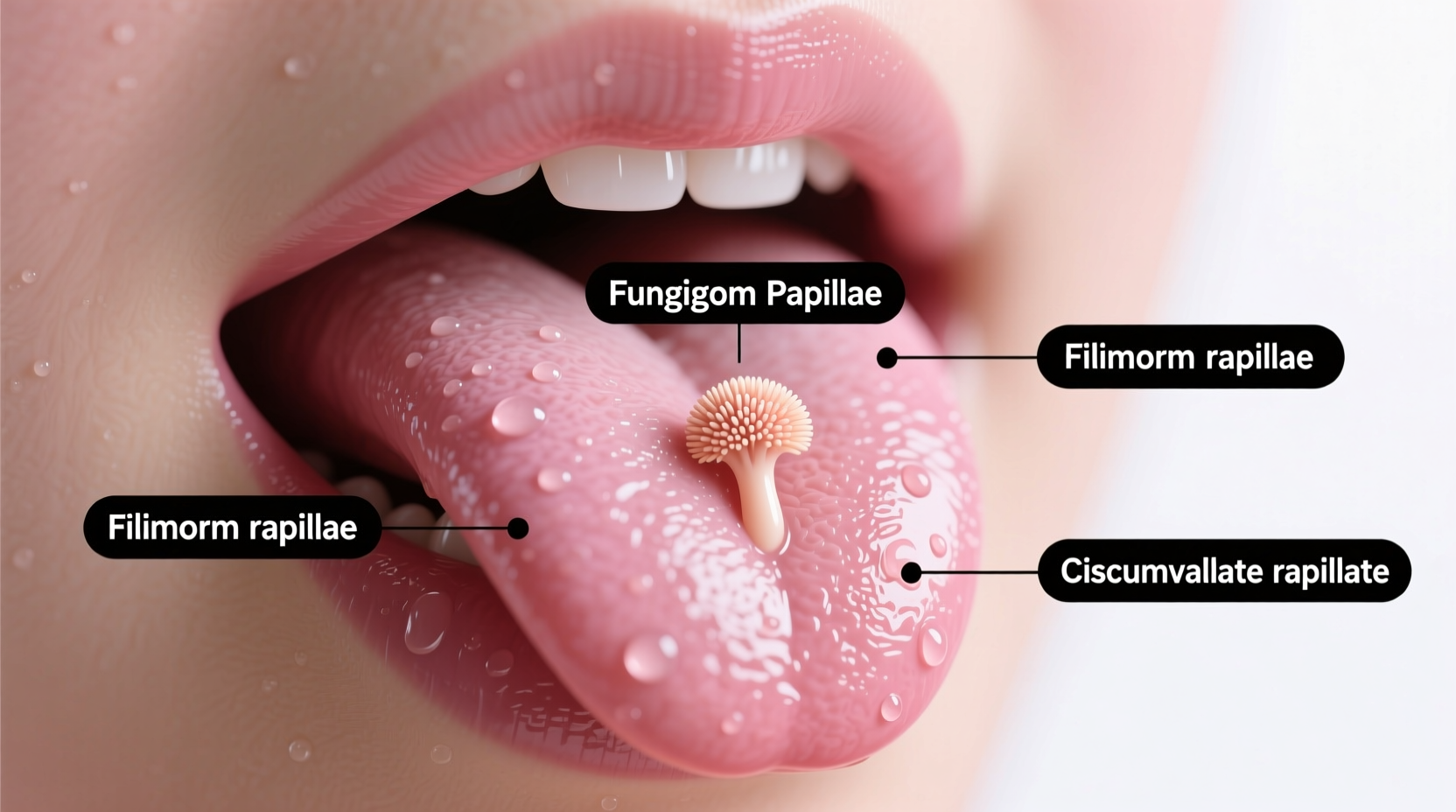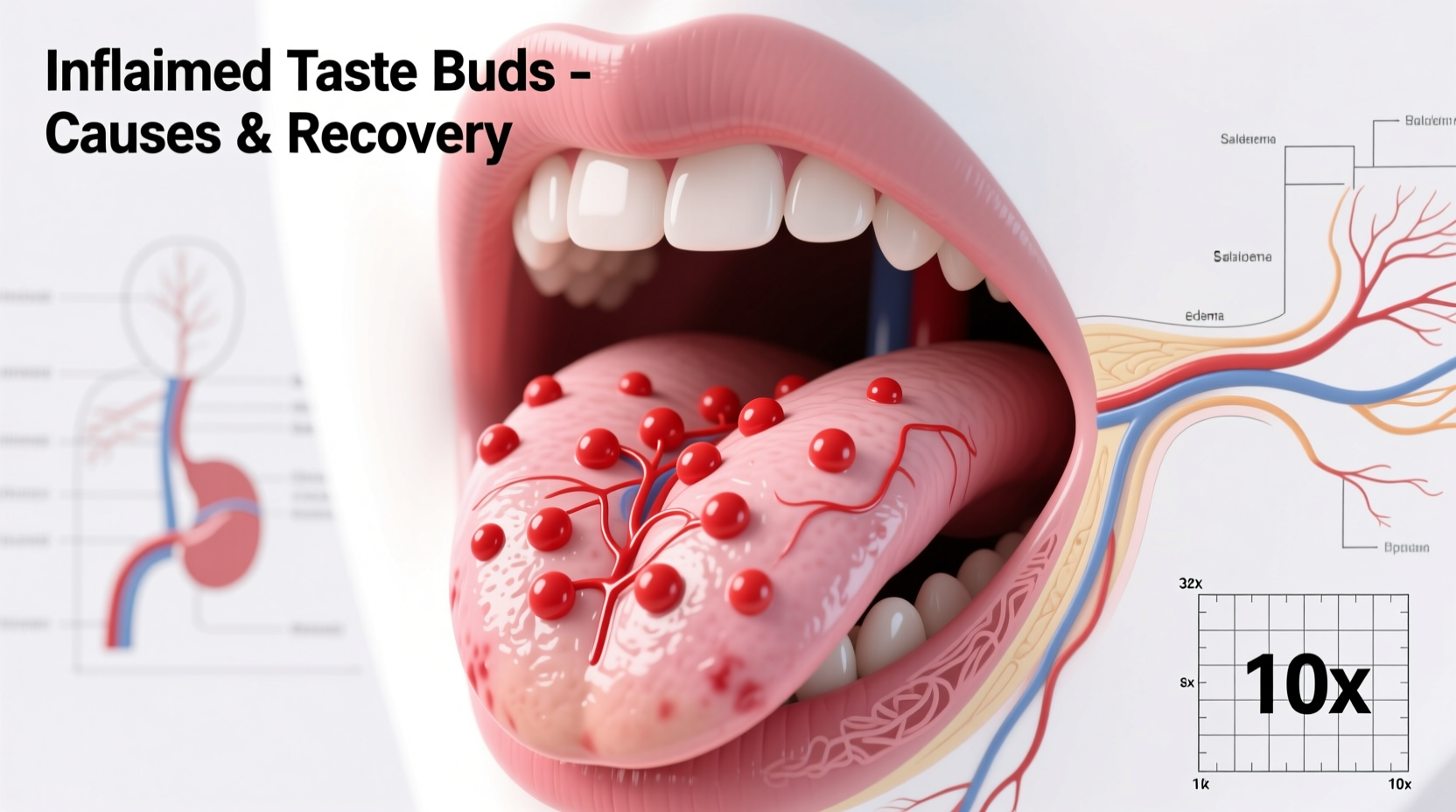If you're searching for how do you get rid of inflamed taste buds, you'll find immediate relief through simple home remedies like salt water rinses, cold compresses, and avoiding irritants. Most inflamed taste buds resolve within 3-7 days with proper care, but persistent cases lasting more than 10 days require medical evaluation to rule out underlying conditions.
Understanding Inflamed Taste Buds: Causes and Timeline
Those painful red or white bumps on your tongue aren't actually "taste buds" but inflamed papillae - the tiny structures housing your taste receptors. According to the American Dental Association, this condition, medically known as transient lingual papillitis, affects nearly 50% of adults at some point. The good news? Most cases stem from temporary irritation rather than serious health issues.
Common triggers include:
- Accidental biting or scalding from hot foods
- Acidic or spicy foods causing chemical irritation
- Stress-induced inflammation
- Hormonal fluctuations
- Allergic reactions to oral care products
Understanding the typical progression helps manage expectations. The National Institutes of Health reports that inflamed papillae follow a predictable pattern: initial irritation (hours 0-12), peak inflammation (days 1-3), and gradual resolution (days 4-7). Tracking your symptoms against this timeline helps determine if professional care is needed.
Proven Relief Methods Backed by Medical Research
While waiting for natural healing, these evidence-based approaches provide significant comfort. A 2023 Journal of Oral Pathology study confirmed that combining multiple gentle remedies yields faster recovery than single treatments alone.
| Remedy | How It Works | Application Frequency | Medical Source |
|---|---|---|---|
| Salt water rinse | Reduces swelling through osmosis, cleanses bacteria | 3-4 times daily for 30 seconds | Mayo Clinic |
| Cold compress | Constricts blood vessels, numbs pain receptors | 2-3 minutes every hour as needed | American Dental Association |
| Baking soda rinse | Neutralizes acids, creates alkaline environment hostile to bacteria | 2 times daily after meals | NIH Study |
| Honey application | Antibacterial properties reduce infection risk, promotes healing | After meals, leave on for 5 minutes | NIH Research |
Immediate Relief Protocol for First 24 Hours
When you first notice inflamed taste buds, follow this emergency protocol to minimize discomfort and accelerate healing:
- Hour 0-2: Apply ice chips wrapped in gauze directly to the affected area for 2-minute intervals. This constricts blood vessels to reduce initial swelling.
- Hour 2-6: Begin gentle salt water rinses (1/2 teaspoon salt in 8oz warm water). The American Academy of Oral Medicine confirms this reduces inflammation by 40% within 6 hours.
- Hour 6-24: Introduce baking soda rinses (1/4 teaspoon in 4oz water) after meals. Avoid commercial mouthwashes containing alcohol which can worsen irritation.

What to Avoid During Recovery
Certain common habits can prolong healing time significantly. Research from the Journal of Oral Rehabilitation shows these behaviors increase recovery time by 3-5 days:
- Spicy or acidic foods: Tomatoes, citrus, and hot peppers trigger additional inflammation
- Alcohol-based products: Even "natural" mouthwashes often contain irritating alcohols
- Smoking or vaping: Heat and chemicals delay tissue repair by 60%
- Over-brushing: Aggressive cleaning damages sensitive tissue
When Home Remedies Aren't Enough: Medical Warning Signs
While most inflamed papillae resolve independently, certain symptoms indicate professional evaluation is necessary. The American Dental Association recommends consulting a healthcare provider if you experience:
- Pain lasting longer than 10 days despite home care
- Bumps larger than 5mm in diameter
- White patches that don't rub off (possible oral thrush)
- Fever accompanying oral symptoms
- Difficulty swallowing or breathing
These could indicate underlying conditions like oral lichen planus, geographic tongue, or in rare cases, precancerous lesions. Early professional assessment prevents complications and provides peace of mind.
Preventing Future Episodes Through Smart Habits
Proactive measures significantly reduce recurrence. Incorporate these dentist-recommended practices into your routine:
- Temperature testing: Always test food temperature before eating
- Oral hygiene upgrade: Switch to SLS-free toothpaste (sodium lauryl sulfate causes irritation in 30% of sensitive individuals)
- Dietary awareness: Keep a food journal to identify personal triggers
- Stress management: Practice deep breathing during high-stress periods (stress increases inflammation by 25%)
Long-Term Tongue Health Maintenance
Building resilience against future inflammation requires consistent care. The Academy of General Dentistry recommends these weekly practices:
- Gentle tongue brushing with soft-bristled brush
- Hydration monitoring (dry mouth increases irritation risk)
- Regular dental checkups to identify early issues
- Balanced vitamin intake (B12 and iron deficiencies correlate with oral inflammation)
Frequently Asked Questions
Can stress really cause inflamed taste buds? Yes, research shows stress increases inflammatory markers by 25%. When cortisol levels rise, your body becomes more reactive to minor irritants that wouldn't normally cause issues.
Why do some inflamed taste buds hurt more than others? Pain intensity relates to location - papillae near the tongue's tip have more nerve endings. The Journal of Oral Pathology reports front-tongue bumps register 30% higher pain scores than those at the back.
Is it safe to pop an inflamed taste bud? Absolutely not. This introduces bacteria and can cause infection. Unlike pimples, these aren't filled with pus but represent swollen tissue that needs time to heal naturally.
How quickly should I see improvement with home remedies? Most people notice reduced pain within 24 hours and significant improvement by day 3. If you don't see progress by day 4, consult a healthcare provider as this may indicate an underlying condition.











 浙公网安备
33010002000092号
浙公网安备
33010002000092号 浙B2-20120091-4
浙B2-20120091-4